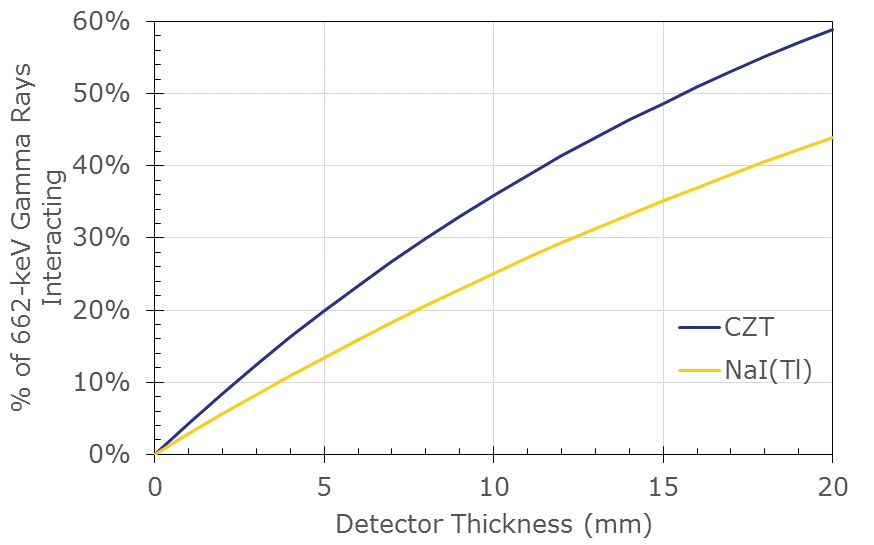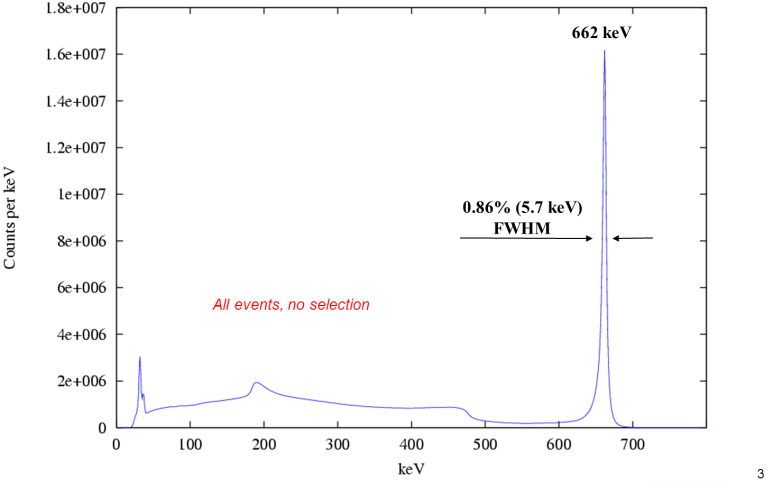Why H3D CZT is Different
There is a famous scene in the film "The Graduate" where Mr. McGuire tries to give Benjamin career advice. He says, "I just want to say one word to you. Just one word. … Plastics." About a decade ago, a radio-chemist at a national lab tried to give me similar career advice. He told me, "I just have two words for you. Two words. Not CZT." I was just beginning my studies in a lab devoted to CZT (CdZnTe), so I was a little bit rattled.
"Why not?" I asked, wondering if it was too late to switch to plastics. The scientist had three main cautions for me:
- CZT can only be grown in layers a few millimeters thick, so it can never be very efficient. Therefore, it can never be useful for high-energy spectroscopy or many realistic measurements.
- The material quality is poor, so there is trapping, hole-mobility problems, polarization, and other effects that limit energy resolution to several percent, only about the same as the best scintillators.
- CZT is expensive. Why would anyone choose it when they can get a scintillator with the same performance for pennies on the dollar?
And, he did have a point. Two decades ago, all his critiques would have been spot on. But, CZT has progressed a lot in the last 20 years. Some commercial products haven't yet caught up with the advances, but at H3D, you will find CZT is different.
Here is the reply I would give the radio-chemist today:
- CZT is now commonly grown to 15 mm thick. In fact, all of H3D's products use 15-mm- or 10-mm-thick CZT crystals. Of course, this isn't as large as NaI(Tl) crystals or even the largest HPGe crystals, but remember that CZT has stopping power 50% greater than NaI(Tl) scintillator per unit volume, so one thickness is enough to catch about half of 662-keV gamma rays – plenty for most applications. CZT's atomic number is comparable to NaI, so a similar fraction of events are the most-useful full-energy depositions. If more efficiency is required, arrays can be built.

- CZT material quality has certainly improved in recent years – less trapping, more uniformity, better contacts. Yes, there are still problems, but the technology H3D uses to read out signals overcomes most of the material problems by allowing calibration on a voxel-by-voxel basis. The proof is in the resolution. We guarantee better than 1.1% FWHM at 662 keV – a lot better than the best scintillators – and our detectors for the government, which use lower-noise electronics, reach 0.86% FWHM for an 18-detector array.

- CZT is still more expensive than scintillators. With growing markets for medical-imaging applications and improved yield, crystal prices have dropped significantly in the last decade, and we hope prices will continue to drop as CZT becomes more popular. But, comparing CZT and scintillators only on price is not exactly fair. Though more expensive than scintillators, CZT gives better energy resolution and mm-scale position sensitivity which standard scintillators won't. The value CZT provides is often worth the cost.
So, to a young person considering a career today, I just want to say one word to you. Just one word. CZT. There's a great future in CZT. Think about it. Will you think about it?
Signup to receive future updates about H3D and our products here.

